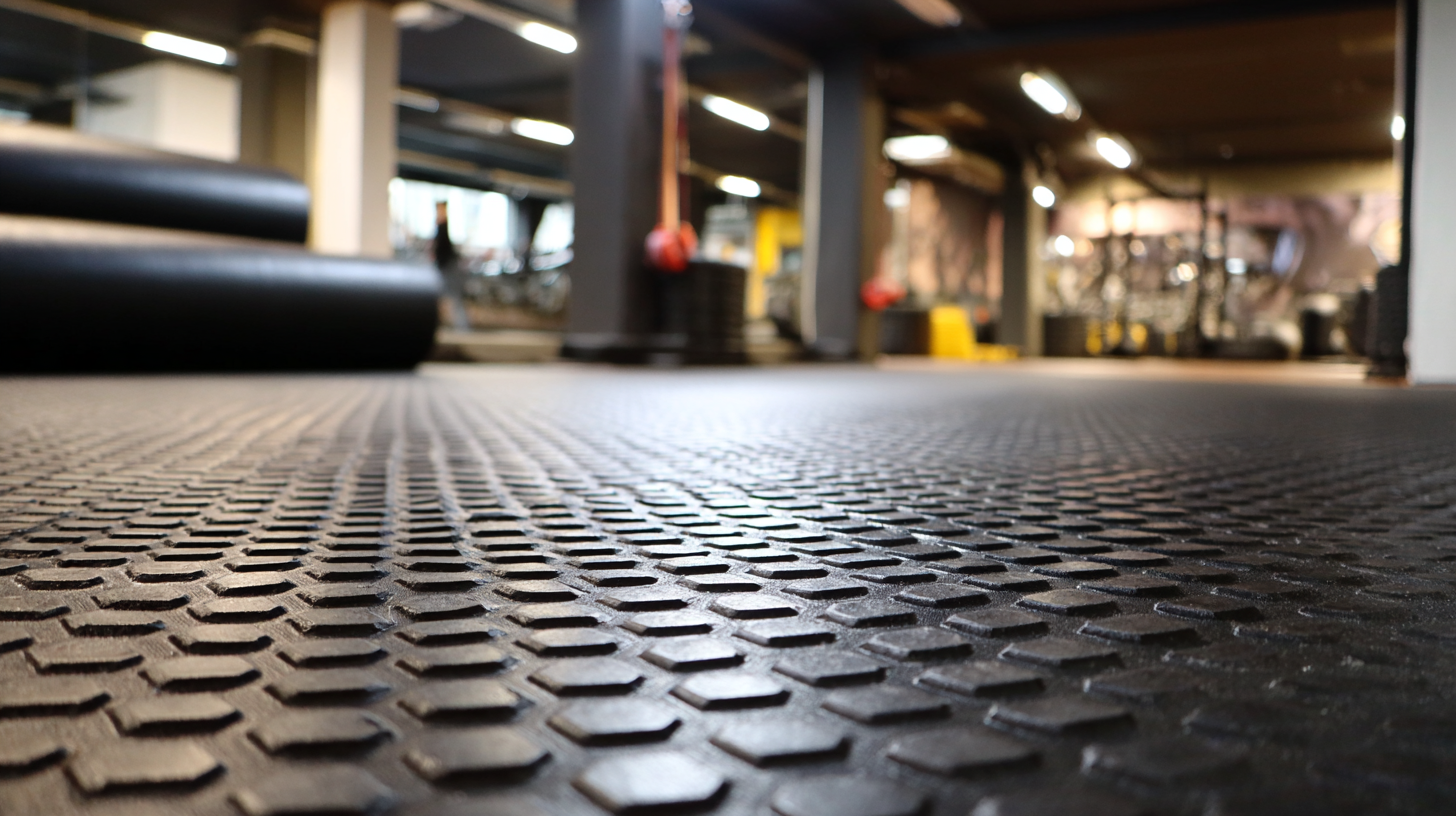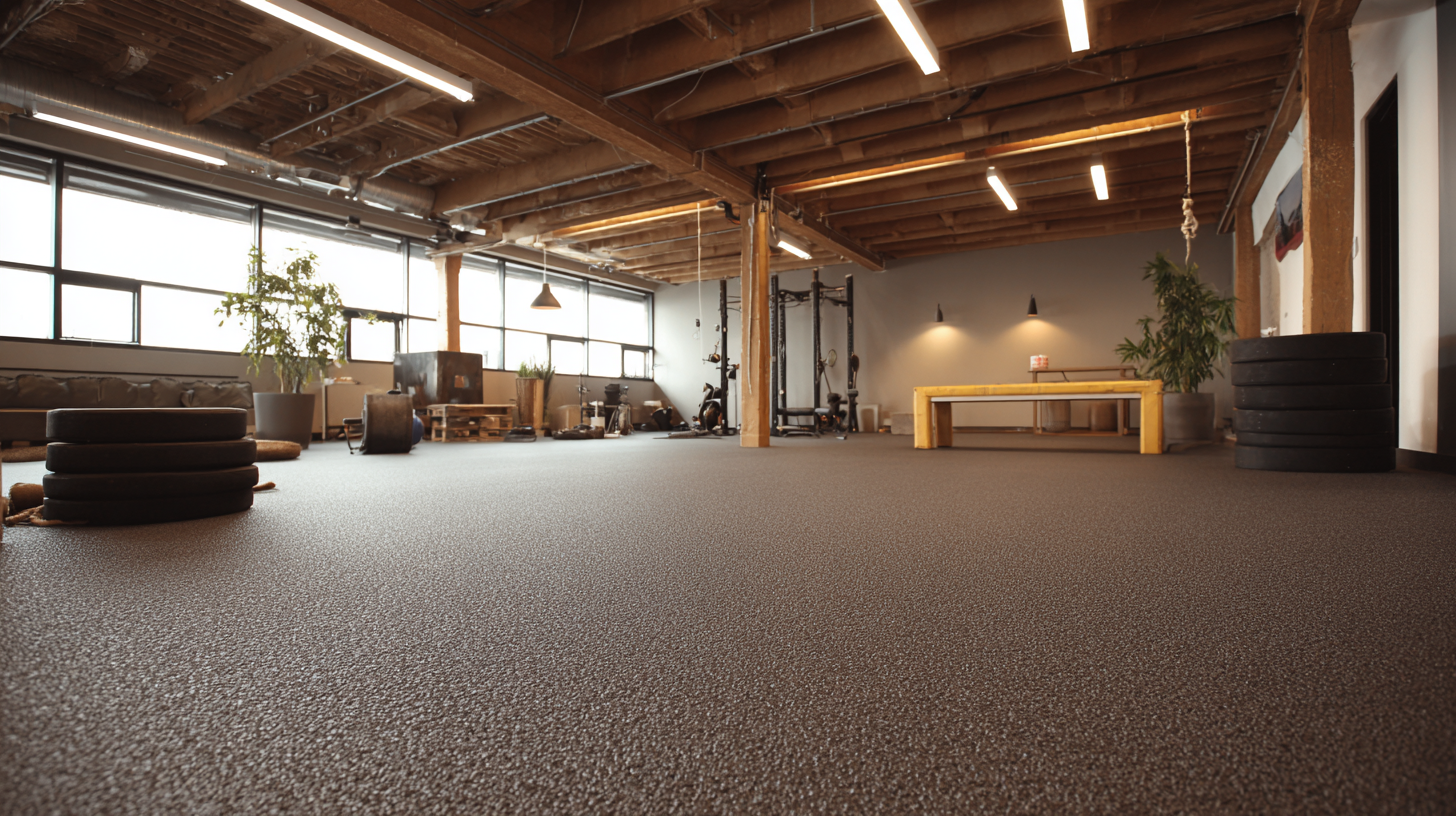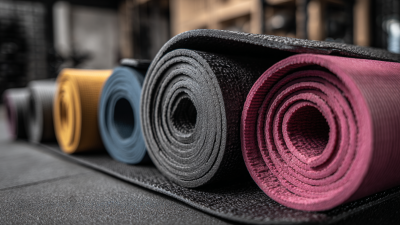
-
Home
-
About Us
-
Products
-
Solution
-
Accessories Service
-
Technicial Service
-
Additional Service
-
News
-
Blog
-
Contact Us
Leave Your Message

When it comes to creating versatile and functional spaces, the incorporation of rubber flooring is often overlooked yet immensely beneficial. Rubber floors are not only durable and easy to maintain but also offer a unique aesthetic appeal that can transform both home and gym environments. This innovative material can be utilized in various settings, providing benefits that go beyond mere practicality. In living areas, rubber flooring adds a touch of modern design while ensuring comfort and safety, especially in playrooms or gyms where impact resistance is essential.

In fitness spaces, the anti-slip properties of rubber floors enhance workout safety, enabling users to engage in high-intensity exercises without fear of injury. This article delves into the best and most creative ways to integrate rubber flooring into your home and gym design, highlighting its transformative potential and the advantages it offers in enhancing both style and functionality.
Rubber flooring has emerged as a versatile and stylish solution for both home environments and gym spaces. Its unique properties—notably durability, sound absorption, and slip resistance—make it an ideal choice for various applications. According to a recent report on the soft flooring market, rubber flooring is projected to see significant growth, driven by rising demand for sustainable materials and energy-efficient designs in residential and commercial spaces.
When designing a home gym, selecting the right flooring is critical. Rubber flooring not only provides a non-slip surface but also contributes to noise reduction, allowing you to work out without disturbing others in the home. Over the years, innovative products such as interlocking tiles and roll-out mats have gained popularity, making it easier than ever to customize your workout area.
Tips:

Rubber flooring has become a popular choice for gym spaces, and for good reason. Its durability and shock-absorbing qualities provide a safe environment for athletes, minimizing the risk of injury during high-impact workouts. Additionally, rubber flooring is resistant to moisture and easy to clean, maintaining hygiene in areas where sweat and spills are common. The versatility of rubber flooring allows gym owners and enthusiasts to create customized spaces that cater to various activities, from weightlifting to yoga.
Tips for Choosing Rubber Flooring:
When selecting rubber flooring for your gym, consider the thickness and density suitable for your specific activities. Thicker mats are ideal for high-impact exercises, while thinner options may suffice for yoga and pilates. Don't forget to factor in the aesthetic appeal; rubber flooring comes in various colors and textures to enhance your gym's look. Lastly, ensure proper installation to avoid any slipping hazards.

Incorporating rubber flooring not only benefits the athletes but also contributes to the overall functionality of the gym. Its sound-dampening characteristics reduce noise levels, allowing for a more focused workout environment. Furthermore, rubber flooring can improve traction, which is essential for maintaining stability during dynamic movements, making it an excellent choice for both personal gyms and commercial facilities.
Rubber flooring has emerged as a popular choice for both residential and gym environments, thanks to its innovative designs and sustainable characteristics. The eco-friendly aspects of rubber flooring materials make them an ideal option for environmentally conscious consumers. Made from recycled tires and other renewable resources, rubber flooring significantly reduces waste and lowers the carbon footprint associated with flooring production. This sustainable choice not only contributes positively to the environment but also offers durability and resilience, ensuring longevity without frequent replacements.
The growing awareness of sustainable living is reflected in market trends, as seen in the U.S. resilient flooring market, which is valued at $10.36 billion and projected to experience steady growth. The modular flooring market is also set to expand, highlighting consumer preferences for versatile and environmentally-friendly solutions. As more homeowners and gym owners seek to transform their spaces, the innovative uses of rubber flooring will likely play a pivotal role in achieving both aesthetic appeal and ecological responsibility, creating healthier environments for people and the planet.
Rubber flooring has emerged as a leading choice for modern interior design, blending functionality with aesthetic appeal. Recent trends indicate a shift towards vibrant colors and unique textures, allowing homeowners and gym enthusiasts alike to infuse personality into their spaces. According to a report by IBISWorld, the rubber flooring market has seen a steady growth rate of 3.5% annually, reflecting the increasing demand for innovative, sustainable materials in both residential and commercial settings.
In living spaces, rubber flooring is being used creatively to enhance visual interest while providing practical benefits. Designers are now incorporating rubber tiles with bold patterns and finishes that mimic wood or stone, making them suitable for various decor styles. In gyms, the versatility of rubber flooring cannot be overstated; its shock-absorbent properties not only reduce the risk of injury during workouts but also contribute to sound insulation, which is becoming increasingly desirable in multi-purpose home gyms. With the global emphasis on wellness, the integration of rubber flooring in fitness areas aligns perfectly with the rising trend towards creating healthier, more engaging environments.
Rubber flooring has emerged as a game-changer in gym design, especially in terms of safety and injury prevention. According to a report by the National Center for Biotechnology Information (NCBI), approximately 1.6 million injuries occur in fitness facilities annually, with falls being a significant contributor. The use of rubber flooring can effectively reduce the risk of such injuries. The material’s inherent shock-absorbing properties help to cushion falls and provide a non-slip surface, which is crucial in high-traffic gym environments where sweaty conditions can lead to dangerous slips.
Furthermore, a study published in the Journal of Athletic Training indicates that athletic facilities employing rubber flooring systems reported a 30% decrease in injury rates over a five-year period. This statistic underscores the importance of investing in quality rubber flooring not just for its aesthetic appeal but also for the enhanced safety it provides. By prioritizing safety through innovative flooring solutions, gym owners can create training spaces that not only inspire but also protect patrons, thereby fostering a commitment to regular exercise without the fear of injury.





